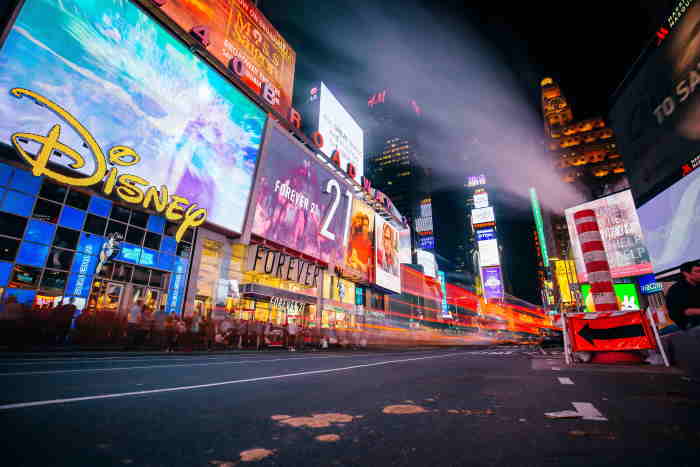The Rise of Digital Advertising: Dos, Don’ts, and Challenges
As the digital advertising space keeps growing and evolving, it continues to become more complicated, too. Standard practices become outdated, the list of don’ts keeps increasing, and the challenges continue to mount. In such a landscape, marketers and advertisers are under constant pressure to adapt and innovate and find creative solutions to problems that were once considered resolved.
This pressure multiples when you consider that businesses are reopening amid the easing down of the pandemic restrictions and brands are looking for fresh ways to reach their potential and existing consumers.
Consider this discussion as a review of where your digital advertising strategy stands, and any touchups you need to apply to it.
Digital Advertising in Numbers:

Digital advertising is a multi-billion dollar industry. According to Statista, global digital ad spending stood at over $378 billion in 2020 – the pandemic and social distance regulations fueling its growth. In 2021, this number is projected to cross the $445 billion mark.
These numbers are staggering and here are a few more to keep you hooked.
- Mobile ads resulted in over 162 billion calls to businesses in 2019.
- 51% of consumers made purchase decisions based on social media ads in their feeds.
- Ads that have the highest retention rate are playable ads.
- 40% of internet users get annoyed when they receive online ads that are based on their search history.
- 49% of digital media experts stated third-party cookie deprecating as their top digital marketing challenge.
Dos:
Here is a brief list of some of the most critical marketing practices that you must incorporate in your larger brand strategy for 2021.
-
Incorporate Machine Learning
We used to call them next-gen technologies. Yet the speed with which these technologies have taken over our current media landscape, I’m no longer sure if that moniker still applies. Machine learning, along with artificial intelligence, is an exciting technology that brands and marketers are using to inform their marketing strategies.
ML is great at interpreting large sets of data and predicting results. Based on these results, you can measure your ad campaign efficacy, structure your retargeting efforts, and build validation frameworks. Instead of throwing darts in the dark, these technologies can help predict numbers that you can match with your results to spot gaps in your ad campaigns, refine your strategy, and launch more targeted campaigns that bear great results.
-
Optimize For Mobile
Your online ads need to be optimized for mobile. Data indicates that if brands succeed in providing an excellent mobile experience, 90% of B2B buyers are likely to return to the company to make a repeat purchase.
If you are an ad or branding agency looking to get more clients, optimize every single detail in your online ad. This means optimizing your advertising logo, the copy, the duration of the ad, the images in the ad – the whole thing.
-
Optimize For Local And Voice Search
The data, again, is strongly in favor of local SEO and voice search options. With the people increasingly using their mobile devices to start searches and to make purchases, they are using phrases such as ‘near me’ to find restaurants, bars, stores, and other local businesses.
Voice searches are also gaining momentum. In 2020, nearly 35 million US consumers made purchases using smart speakers. And this growth shows no signs of a slowdown.
Numbers like these make it quite evident where you need to make the most investment. Creating online ads that are optimized for local searches and voice searches will not only increase your ad reach but also improve conversions and brand awareness.
-
Omnichannel Marketing
While each brand has its favorite advertising channel – mostly because of the presence of the brand’s target market there – creating a strategy that uses omnichannel marketing is critical.
You want your brand to be everywhere. But more than that, your ads and posts should be tweaked to match the culture and voice of each platform. For example, when advertising on Instagram, you need to be heavy (but subtle) with aesthetics. Put your best images there, the highest quality possible. On Twitter, pack your ads with a healthy dose of wit and the best one-liners. On YouTube, a touch of explainer video vibe will do you much good.
Omnichannel marketing allows your brand visibility on all relevant platforms. It tells your audience that you know what you are doing and you plan to do more of it.
-
Targeting And Retargeting
Understanding your customers and knowing what has brought them to your website is instrumental in creating an effective ad campaign. When your campaign is properly targeted to attract your ideal consumers, it leads to better click-through rates and more conversions. Therefore, invest in understanding your consumers and create buyer personas.
You can then choose a variety of different keywords and target variations of your buyer persona, essentially resulting in several smaller and different ad campaigns. This makes your ad strategy more focused, and open and helps you find fresh new ways to reach your target audience.
Don’ts:
Even the best of us make mistakes, but what are some of the mistakes that you should never make when it comes to online advertising?
Let’s see.
-
Don’t Be Intrusive
Facebook might be the biggest digital ad platform, but God be my witness, it seriously tests my patience when I’m watching a funny video, minding my own business, and suddenly a video ad invades my space and then it goes on and on – no Skip sign in sight.
The same problem, albeit on a smaller scale, is present on YouTube.
As I mentioned a stat at the start of my post, nearly half of the Internet users find such ads intrusive and annoying. Do you then think they endear the brand to the consumer? The opposite happens.
Therefore, as you sit with your team to discuss your digital advertising strategy for the next quarter, make sure to find better ways to get people to click on your ads.
-
Don’t Ignore Your Website
Your website is the most precious piece of digital real estate for your brand. When people click on your ad and decide to visit your website to see what you are all about, is it doing justice to your brand or undoing all the hard work done by your marketing team?
Whether you are creating display ads, video ads, or playable ads, you always have to make sure that your website is updated with the most relevant and authentic information. It should be quick to load, designed with the most modern aesthetics, updated inventory, and must offer a satisfying user experience.
-
Don’t Jump In Without A Strategy
You need a campaign strategy all planned out before you even think to create your ad. What is the purpose of this particular campaign? What is going to be its performance metrics? Will the ad be launched in multiple formats? Which advertising channels will you use and in what order of importance?
The more you know your reasons for favoring one campaign decision over the other, the stronger your strategy will be and clearer your thought process.
It will also reduce your ad spending and may help in getting better results with a more focused approach.
-
Don’t Be Too Salesy
This one is for copywriters on your team. When you are writing copy for a digital ad, it must never contain ad-speak. Use everyday language, be funny, and never try to sell.
See, customers know that you are trying to sell your products, so instead of hyping your product up, focus on the customer. Make it all about them. Tell them what your product can do for them, how it can improve their lives, and what specific problems it solves for them. Your customer needs to be the focus, not your product.
When you engage consumers and talk to them about what they need, your product will naturally come into the conversation and will have a better chance of ending up as a successful sale.
-
Don’t Forget About Customer Experience
Great customer experience is the ultimate marketing tool. Even a slight increase in better customer experience results in a significant increase in sales and brand equity.
If you are a marketer, customer experience should be on the top of your mind when you are creating your ad. Think of its timing, duration, and context. Even if it’s a popup display ad it should be timed perfectly. Instead of forcing people to look at it when they are browsing your website, perhaps wait and only display it when they are done with their primary task – signing up, for example.
Personalized engagements, great aesthetics, ease of finding the right information, a clear and focused sales funnel – all of it improves customer experience and may be the thing that makes people click your ad instead of your competitor’s.
Challenges:
-
Customer Exhaustion Of Digital Ads
Ad fatigue is a real thing. According to digital marketing experts, a regular internet user sees between 6,000 to 10,000 digital ads every day. That’s a LOT.
It’s too much noise, and customers are getting rightly exhausted. The customer exhaustion of digital ads is becoming a top concern for marketers. You see this exhaustion affecting your campaigns when your click-through rates drop while your ad frequency increases.
If you are monitoring the performance of your ads and you see this taking place, know that your customers are seeing your ad way too much – they are getting frustrated and annoyed. Worse, they may be tuning you out.
The way to fix it is to keep an eye on your metrics and when you see the balance of CTR and frequency getting out of shape, step in and reduce your ad frequency. You can also create variations of your ads and publish them in rotation. Changing ad colors, wordings, and other details can also help combat ad exhaustion.
-
Privacy Concerns
Another challenge that you have to work through to make your ads clickable is the growing concern for online privacy. Major mobile browsers – Firefox, for example – no longer allow third-party cookies. Apple’s Safar doesn’t allow it, and now neither does Google.
Recent regulations now require advertisers and businesses to take proper consent from the user before you track or store any of their data. You must also be open and transparent to your intended use of this data.
These evolving privacy regulations mean that you need to forget about third-party cookies and be open and upfront with your users. Also, invest in local SEO and reach out to your local consumers. You can then use that data along with the data of your existing consumers and leverage AI and ML to analyze the data and make predictions.
-
Market Saturation
We talked about it earlier but it’s worth mentioning again. Almost every business is doing digital ads. The pandemic has pushed even the most reluctant businesses to try and test the digital ad waters. All of this has created an extremely noisy and saturated market.
To keep your head above this rising water, your ads need to be something that no other ad is. Create stories in your ads. Increase personalization. Invest in technology and use the power of analysis to find out customer behavior patterns that others may be missing.
-
Lack Of Competition
On one hand, there are too many brands and marketers crowded the digital advertising landscape. Yet, on the other hand, there are too few advertising platforms and not enough choices available to the marketers.
A Techxplore article argues that the dominance of the market by just a handful of companies (Google and Facebook) has created an environment where lack of competition has kept marketers in the dark. All the strategic roles during the advertising chain are occupied by these few companies and marketers have to play by the rules these companies set out.
This lack of competition may be encouraging unlawful practices such as:
- Undue favors to their own products
- Being a barrier to access, and
- Creating a monopoly of higher rates
-
Fraudulent Traffic
As businesses come under pressure to use all available channels – including digital marketing – to tap into newer markets, inexperienced marketing agencies may indulge in unsavory practices to meet the needs.
Buying or creating fake traffic for businesses is a challenge facing the digital ads market. It not only hurts the brands and other media agencies but also forces the ad platforms to create more regulations and impose more restrictions to keep things transparent.
Bottom Line
The rise of digital advertising was already going at an unprecedented rate but the pandemic just accelerated everything. Now, more than ever, marketers need to analyze best practices in their industry and see if they still stand true.
Through this post, we have tried to put things into perspective and give some pointers that can help marketers create and execute better digital ad strategies.








